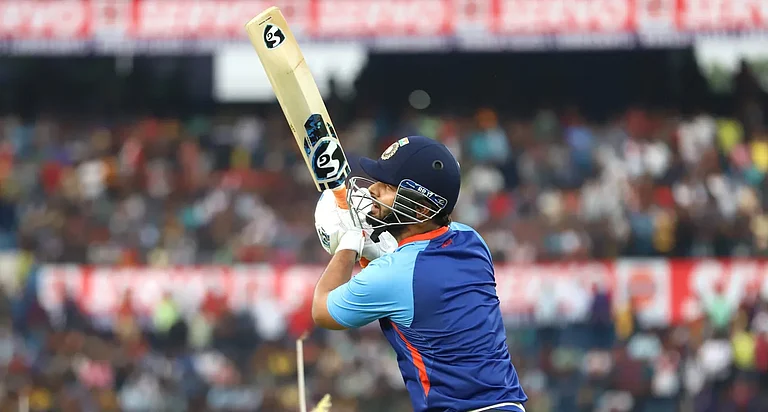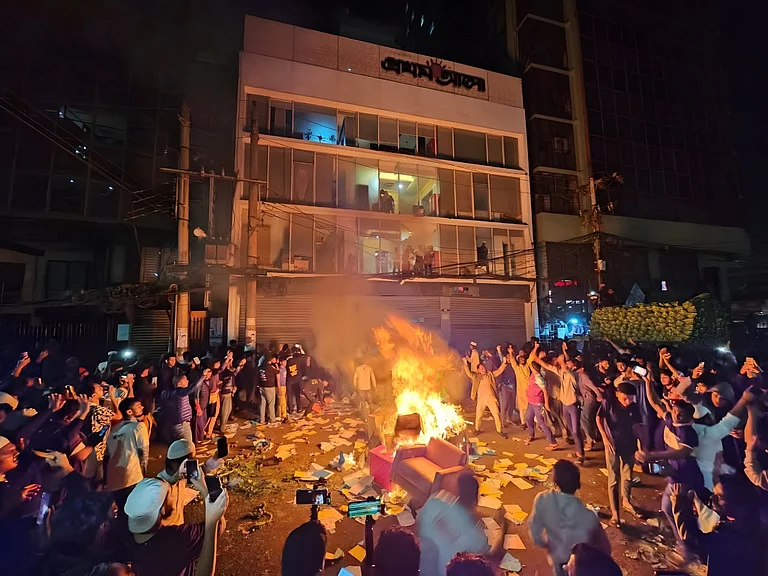While heading a coalition government of JD(U) and BJP in Bihar in July 2012, Nitish Kumar was eagerly launched a website, www.lohiavani.com, comprising 16,000 pages on the life and thoughts of Ram Manohar Lohia, including 38 stirring speeches. A lifelong admirer of the socialist icon, the chief minister thought the website would inspire youngsters just the way Lohia had captured the imagination of his generation’s youth.
At the helm of another NDA government six years later in 2018, Nitish wrote a letter to Prime Minister Narendra Modi, demanding not only the Bharat Ratna for Lohia, but also the renaming of Goa airport after him in view of his contributions to the freedom struggle of the coastal state against Portuguese rule.
In between his two tenures with BJP by his side as a ‘junior partner’, Nitish ran a ‘Mahagathbandhan’ government in an alliance with Lalu Prasad Yadav’s RJD. But, regardless of allies with drastically different concerns and ideologies, he continued to wear his admiration for the two socialist leaders—Jayaprakash Narayan being the other—on his sleeves. In 2016, Nitish reiterated that Lohia’s Sapt Kranti (seven-fold revolution) and Narayan’s Sampoorna Kranti (total revolution) were the same. “They (Lohia and JP) have been our idols and we are moving forward on their principles,” he had said then.
For someone who grew up as an “unswerving socialist”, as Nitish’s biographer-friend Arun Sinha puts it in Nitish Kumar and The Rise of Bihar (2011), and was drawn towards Lohia’s writings in his student days at Sri Ganesh High School at Bakhtiyarpur in Patna district, it was an embarrassment when the Chhapra-based Jai Prakash University (JPU) unceremoniously dropped works of both his idols—ironically, the university itself is named after JP—from its PG syllabus of political science recently. At the same time, the varsity included BJP ideologue Deen Dayal Upadhyay along with Subhash Chandra Bose and Jyotiba Phule in the course. Apart from Lohia and JP, material on and by Dayanand Saraswati, Raja Ram Mohan Roy and Bal Gangadhar Tilak were also dropped. But it was primarily the exclusion of Lohia and JP that kicked up a row; the inclusion of Upadhyay, in particular, was interpreted as a bid to saffronise education.
Unsurprisingly, Nitish was peeved. Besides, it had offered up another issue for the Opposition to exploit—to charge him of kowtowing to the diktats of BJP, which has emerged as the dominant ally in his current term.
Lalu, currently recovering from illness at his daughter Misa Bharti’s house in Delhi, seized that opportunity. Calling the Bihar government ‘remote-controlled’ by RSS, the RJD president said that he had set up the university named after Jayaprakash-ji (JP) in his karmbhoomi Chhapra 30 years ago. “Now the Sanghi (RSS) Bihar government and its officials…are removing the thoughts of great socialist leaders JP-Lohia from the syllabus of the same university,” he tweeted. “It cannot be tolerated.”
The controversy left Nitish in a tight spot. An avowed Lohiaite who owes his rise to JP-inspired students’ movement in the mid-1970s, Nitish spoke to education minister Vijay Kumar Choudhary to overturn the decision. “The chief minister was so upset that he called me and asked me to rectify the mistake,” Choudhary told reporters later.
After initiating action against the erring officials in a seemingly damage-control mode, Choudhary met governor-cum-chancellor of universities, Phagu Chauhan, a former BJP legislator from UP, to convince him of the need to retain the works of influential thinkers like Lohia and JP in the syllabus. Later, the governor ordered JP University to reinstate writings of both leaders in the PG syllabus.
According to Choudhary, Governor Chauhan appeared to have been in the dark about the changes. He also claimed that the university did not adhere to rules while altering the syllabus.
University sources, however, say that a review of the syllabus began on the advice of the University Grants Commission four years ago and an academic committee was set up for the purpose. The review work was completed during the tenure of previous governors Satya Pal Malik and his successor Lalji Tandon—both appointees of the BJP government at the Centre, but JP University had kept the implementation of the revised syllabus on hold.
Since the Governor heads state universities as chancellor, the Opposition suspected the BJP’s hand, alleging that Nitish, weakened by his poor performance in the 2020 assembly polls, had buckled under the BJP’s pressure to drop Lohia and JP from the syllabus.
The BJP rubbishes the allegations. Senior leader Sushil Kumar Modi, himself a product of the JP movement, says removal of Raja Ram Mohan Roy, Maharshi Dayanand, Lokmanya Tilak and socialist thinkers such as Lohia and JP from the syllabus is “highly objectionable”. “The state government should initiate immediate action against those responsible for tinkering with the syllabus,” he says.
JPU vice-chancellor Faruque Ali, on his part, is learned to have explained to the government that Raj Bhavan had duly approved the new syllabus during the tenure of his predecessor Chauhan; he had merely implemented it now.
Like Nitish, Lalu has also been an ardent follower of Lohia and JP and like his bitter rival, he, too, emerged from the students’ movement led by JP. As befits their rivalry, over the years they have often accused each other of jettisoning the ideologies of Lohia and JP.
This is also not the first time when the two disciples of Lohia and JP have crossed swords over the omission of a topic from the syllabus. In 2008, the Nitish government had removed a chapter from a Class VIII Hindi textbook on three chief ministers of Bihar—late Karpoori Thakur, late Bhola Paswan Shastri and, of course, Lalu. It was subsequently replaced by a chapter on social reformer Jyotiba Phule.
The chapter Mitti Ke Gaurav from the textbook Gadya Sopaan chronicled the inspiring lives of Thakur and Shastri, but the inclusion of Lalu alongside them apparently raised the hackles of the Nitish government. The chapter, written by former Bihar administrative service officer Harivansh Narain, had been introduced during Lalu’s tenure as CM in 1994.
After coming to power in 2005, Nitish’s government resolved to withdraw the chapter. The decision kicked up a storm, with Narain asserting that it was an essay focusing on three chief ministers who had risen from an extremely humble background.
However, it’s also true that the five-page chapter was originally written on the life and times of Shastri and Thakur. Lalu made an entry apparently at the behest of the top brass of the human resource department under, needless to say, his own regime. Narain, who was suspended and faced departmental proceedings in the Animal Husbandry Department during Nitish’s tenure, later told this writer that nobody could cast aspersion on the literary merit of his article. “As a literary piece, its substance, style, craft and language are all flawless,” he claimed.
It is altogether a different matter that the JD(U) leaders said that there was nothing inspiring about Lalu’s life. “Lalu is not a historical figure that his life should be included in the textbook. Has he set an example for children?” they asked. Lalu thus went out of the syllabus. And with him went Thakur and Shastri.
(This appeared in the print edition as "When Old Masters Cross New Ideals")


























